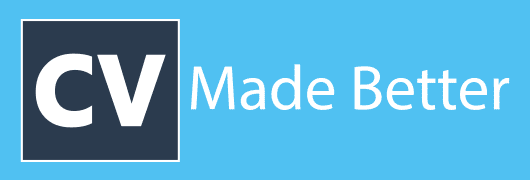Expert Tips on How to Write a Technical Resume

As an IT or Engineering professional, your technical resume tells your career story. It details the breadth and depth of expertise in quite often very specific domains or niches. The resume describes what you did to grow your skills, hone your talents, and acquire knowledge. In telling your story, think about listing where you’ve worked, in what capacity and roles. This is information about what you have to offer. It tells your history but can also describe your future and where you are heading.
Regardless of your existing situation – employed or seeking a job, contracting or in a permanent role – it is wise to have a current technical resume. When economic times are tough, it’s essential to be prepared, and a well-tailored resume offers just that. As a technology / engineering professional, your resume requires special attention to the combination of business and technical knowledge.
Below are the best practices to write a technical resume and make it stand out.
1) Introduce Yourself Properly
Start your technical resume with an introductory statement. Often referred to as a career summary, it has a 0 prominent place on your resume and is your first opportunity to make a great impression. With a resume, you generally have 30 seconds to capture the reader’s attention. Make the most of the opportunity.
Also known as the why hire me statement. It concisely describes key reasons the reader should keep reading the resume to the end. Keep it short, result-focused, no more than five sentences. Avoid overused and meaningless buzz words like results-oriented and self-motivated. You want your resume not to blend in but stand out.
2) Describe why you would be a Valued Employee
Making a statement about the value you would offer is often done by describing past achievements and linking them to positive results. For technical professionals, writing about accomplishments without directly relating them to technology is challenging. Making a connection to your business value often seems strange for those who consider their activities technology-focused.
Think of your business value like this…
The value you provide within your team. A collaborative team is interdependent that requires effort from all multiple parties to achieve shared business goals. A successful team must be both efficient and effective.
Being efficient means, the team is conscientious when using resources – people, budget, technologies, tools, and business people’s time. How do you contribute to team efficiency? Are you a facilitator who ensures that meetings are agenda-driven, focused, and productive?
Being effective means the team produces results that matter. What was your contribution as part of an effective group? Maybe you were the analyst who made sure the correct systems were built to meet business requirements. Or perhaps you were the software tester who improved user’s confidence by ensuring they didn’t see any system bugs.
Were you the optimiser who gets the most out of existing technologies or the innovator who locates simple, quick and inexpensive solutions to a technical problem?
The external value you provided: When looking outside the team, value can be defined by your individual contributions and/or the team’s contributions. Something or someone benefits from the team effort. Who is it, and what did they profit? If it’s a process, ask why a new or updated process was required? What was the issue, and how did the new process changes fix it? If it’s an individual, ask what capabilities they have gained that were previously lacking?
Children use the classic “Why, Why, Why” method. This is not to intentionally irritate their parents, but to get more and further information. For Technical resume writing, use the “So?” method. This is key when looking for results, e.g. you did something, and as a result, something positive happened. It works like this.
Developed and designed data architecture for BI, data warehousing and operational systems.
So?
Set standards for data structures, metadata management and data storage.
So?
Significantly improved the consistency of data design practices across multiple platforms / applications and better able to track data through systems.
So?
By tracking data through systems, I could identify inconsistencies and redundancies. As a result, I corrected the inconsistencies, removed the redundancies, and improved the overall data quality.
So?
With improved data quality, the information delivery was more reliable and trustworthy, improving business and IT relationships, which continue to grow.
So?
Developed and defined data architecture for warehousing, operational systems and business intelligence resulting in improved quality of data. Information delivered became more reliable and trusted, which led to continuous business and IT relationships improving.
3) Career Objective
A career objective informs a potential employer what it is you would like to do. Having a clearly defined objective shows your commitment to achieving a specific goal. It serves as a personal reminder of what it is you wish to achieve and keeps your focus on specific results. This type of objective makes for a more effective job search, and you are in a better position to evaluate potential work.
Use the process of creating your technical resume as a chance to clarify and refine your career goals. A general objective such as “I want to work for a company where I can use my great network skills” casts a broad net and is best left out. Use a specific job such as Network Engineer or subject areas such as help desk, desktop support or IT support to differentiate your goals. If you are unable to articulate what it is you want, then the resume reader may impose their own interpretations.
4) Present Yourself Well
Choose a format that best highlights your strengths, not your weaknesses. There is not a universal one-size-fits-all technical resume format. Every individual brings unique perspectives, expertise, skills, experience, and qualifications. A resume should be created with a view to present a persons strengths in the best possible light. Looking good in a photograph depends on lighting, the angle the picture is taken and the framing. Looking good in a resume is similar. It depends on the perspective you describe yourself, the skills /characteristics you choose to highlight, and the structure in which you use to present or frame your resume. There are no ultimately strict rules for resume formatting. Below is three common formats and some helpful general guidelines:
Chronological – This format lists your employment experience in a reverse chronological order, with the most recent work coming first. If you have held a few jobs or been with one employer for an extended period, then a chronological technical resume might work well.
Functional – Also known as a skills-based format resume. It first lists your skills divided into major categories such as Operating System Administration Process Improvement or Quality Assurance. If you’ve held numerous jobs whilst working in IT (which is not uncommon, especially for contractors), this format emphasises your skills and experience and removing the focus from timelines.
Combined Chronological and Functional – This style starts by listing experience chronologically and adds functional formatting within each job listed.
It’s not always obvious which resume format might work best when you start writing. So if you’re just starting, chronological makes for a good beginning. Once you list the chronological information, you can look for any repetition, categories of skills, or repetition that suggest a functional organisation. Ultimately you may choose to draft both a chronological and functional format resume. You can then compare side by side to make the best decision.
5) Highlight Interests Hide your Disinterests
Unless vital, with the resume, try to diminish the prominence of your skills no longer of interest. Don’t highlight the activities and skills you no longer enjoy. Possessing a “been there, done that” outlook, you’ll need to make a decision. You can exclude these skills entirely because they’re irrelevant or include them but reduce their prominence within the resume. When you include them at the same level of significance as those things that you want to be doing, they disguise your interests, slant your message, and confuse the reader.
Consider an example: You’ve spent the past two years developing, designing, and implementing software for marketing, sales, and client analysis / reporting. You learned loads but are now ready to move on and try something new. Don’t give up valuable space on your resume to explain every project in minute detail. Condense and summarise. There were similar activities don’t feel you need to repeat. Focus on what you learned and simply apply it to what you would like to do in your career next.
Be aware that you will be asked about them during interviews even when minimising skills that no longer interest you. Be prepared to position them in a way to convey the right message: “While designing and developing software, I learned a lot about choosing the right structures for multiple analysis and reporting requirements / tools. This is why I would be an excellent choice as a software developer for your company.”
Industry, Application and Software Knowledge
IT professionals have a tendency to discount their knowledge of business applications / software. Not seeing the value possessed in terms of expertise with tools, software and technologies. Knowing about business and business applications is often treated as preliminary work before commencing the technology section’s real work. Nothing could be more wrong.
The company knows the value of business and application knowledge. Knowledge of business applications is as necessary as your technical knowledge. As such, it needs to command adequate space on your resume. Consider this example, a healthcare employer seeking a database developer for a patient claims management system. The applicant has lots of experience using Oracle however, the employer uses only SQL Server. Only mentioning only technology on your resume helps it become lost in the crowd. When the resume also details your claims processing experience, including the fact that you worked expansively with Common Electronic Data Interchange (CEDI) to process Medicare claims, your resume now stands out. The employer recognises it’s faster and easier to teach an Oracle developer to use with SQL Server rather than have a SQL developer learn the healthcare industry.
6) Show Yourself in a Different Light
Creating multiple versions of your resume is very useful. Each job listing is unique in its required combination of tools, technologies, software, experience, skills, industries, etc. It is crucial to present your expertise and skills accordingly. One technique is to write a covering letter that displays relevant information from your resume and match it to the job listing. This method works well if your resume and cover stay together, but they are often separated during the screening, review, and interview processes. Your resume needs to stand out independently without an attached cover letter. To accomplish this, you may need different resume versions.
Managing different resume versions can become a job in itself. Some companies will be glad to help but keep it simple, and an Excel spreadsheet is adequate if utilising a do-it-yourself approach. Keep different copies of each resume distributed separately and create a unique identifier by embedding metadata such as company name, job title, and date sent into the resume file’s name.
How do you know you have exceeded your version limit? When you can’t recall each version, you’ve gone far enough. The purpose of your resume is to gain a job interview. In this setting, your resume acts as the reference, but not the script. If you need a resume content management system to keep track, you’ve over the edge.
7) Technical Resume Hard skills
This relates to technical expertise you should highlight in your resume. As you’re applying for the position, review the job advert and take note of any technologies, software or coding knowledge the employer requires the applicant to possess. If you possess those skills, ensure you highlight them on your resume. A few examples of hard technical skills an employer might expect a job candidate in technology to have include;
- For web developers, proficiency in CSS HTML and JavaScript are a must.
- For cybersecurity IT professionals, knowledge of scripting languages and programming languages are desired by employers, along with a proven track record of analysing large data sets and malware.
- Programmers should emphasise experience with software like SAS and languages like SQL.
- Data scientists should always display expertise in data modelling techniques.
- AI or machine learning engineers must highlight proficiency in Python and any experience with GPU computing or data mining.
8) Technical Resume Soft skills
These are also known as “people skills” and traits that demonstrate that you bring more to the table than simply technical expertise. The below-desired characteristics are common among many technical job postings and here’s why they are rated as important:
- Collaborative but independent worker: Companies are looking for workers who can self-manage and work well with team members when needed. In technology, work is commonly both independent and team-based. Therefore, it would be wise to list instances when you have thrived working independently and with others.
- Great Communicator: Communication skills are always highly desired in any workplace, but especially in tech. The ability to communicate technical info effectively to different audiences, including those who understand technical jargon and those who don’t, is highly sought after by companies.
- Quick Learner: Working in technology, you’ll need to adapt to new tools, applications and tools all the time. On your resume, always attempt to demonstrate your ability to learn and adapt quickly.
- Creative Thinker and Problem Solver: Tech workers often don’t think of themselves as creative, but there’s a great deal of originality in this line of work. You should highlight your ability to push yourself intellectually to solve challenging problems.
9) Add links to professional profiles
As a current or would-be tech worker, you’re very likely to have a presence online that you’ll want to share with potential employers. It’s a great idea to add links to Github, LinkedIn, your online portfolio, or other relevant sites in your resume using embedded hyperlinks. Most recruiters or hiring managers will be viewing them on a computer, so they can click through to gain more information. The additional corroboration lends credibility and clout to your final technical resume product, even if they don’t.
10) Tailor your technical resume to the job posting.
Closely read the job advert to understand what a company is looking for and tailor your resume accordingly. Pick out the important keywords and incorporate them into the resume. Many companies use ATS ( Applicant Tracking Systems) programs to sift / filter resumes before a human eye gets to see them. Using the right keywords significantly increases your chances of getting through this initial screening process. When listing skills, look at the job description. Tailor your resume skills section to reflect how your experience qualifies you for this position. You might not have worked in the exact job. Still, some of the skills gained during your career, like coding languages, implementing software, or understanding SQL frameworks, are very likely relevant to the position you want to apply for. This small extra effort can see a significant boost in the number of interviews you achieve.
11) Include Your Abilities
List the correct amount of technical skills. If your resumes first page is covered with a large grid listing all your language, programming and database skills, then you’re a true IT geek. You derive your value from the technologies you use. For the rest of us, we should look to strike a balance between business applications, technology and processes. When too many technologies are listed, it is difficult to identify which are the most current and in which you are most proficient.
Throughout your technical career, you’ll be exposed to multiple technologies and achieve a varying level of expertise in each one. The technologies don’t all relate to your current job search. The preferred technique to display technologies where you have the most significant skill level on the resume’s first page under a heading like Technology Summary. You can then optionally list other technologies you are less familiar with later in the resume under a heading such as Other Technologies. The other technologies will be picked up by automated resume scanners or ATS Systems but placed, so they take away from your primary technical skills from the human reader.
12 ) Redundant Technologies
Remove really old technologies from your technical resume. It is not an antique show. No one cares about your ability to optimise IDMS queries or about programming skills in PASCAL or ALGOL. Including nearly forgotten or redundant technology will not assist you in getting the job you want. They may, however, have the opposite effect and help you get a job you don’t.
Some old technologies are still widely used. Where technologies overlap with your experience / ability, you’ll need to give it some careful consideration. Some employers will care about your ability to program in PASCAL. But do you want to be a PASCAL programmer? Many companies have legacy systems that they require someone to maintain, operate and enhance. If you decide to stop chasing the latest technologies and step back from technology’s leading edge, that could be you. Just be clear about your motivations as they may impact your career.
13) Resume Length
Your resume is not a novel, and ensure it matches the length of your experience and the breadth and depth of your skills. The resume is a snapshot summary of your work history designed to provide highlights of your achievements. When you have plenty of experience, don’t just list everything you have ever done. Every sentence in your resume should say something meaningful or relevant otherwise, just remove it.
If you are a graduate with minimal experience or relatively new to the IT industry, then it’s unlikely your resume will extend past more than one page. Bulking up your resume with excess words that are meaningless does not impress anyone. If you possess a depth of knowledge and lengthy experience in IT, a one-page resume is probably too short. Don’t try to condense your resume to one page if that means small margins and tiny fonts. However, that does not mean a 20+ year career is an excuse to write a ten-page resume.
An excellent way to test is by reviewing your resume sentence by sentence and asking yourself.
- Is this skill still relevant to my desired job? If so, how is it relevant?
- Does this skill combine with others to create the message I am looking to get across?
- Is this skill recent or outdated?
If a skill is not recent or relevant and works well with other skills, then there is no reason to have it on your resume. Non-related skills distract the reader, confuse your overall message, and take up valuable time.
In Summary
Update and review your resume every six months, whether looking for a new job or not. If you are employed but concerned in these uncertain times, you’ll be prepared should an issue arise. If you lose your job, then it’s your personal marketing tool. If you’re not looking but open to keeping an eye on jobs, use it to create opportunities. Your resume is about your future.
If you need help regarding a new position, don’t hesitate to reach out to us. Take a look at our CV, Resume and LinkedIn services below.



